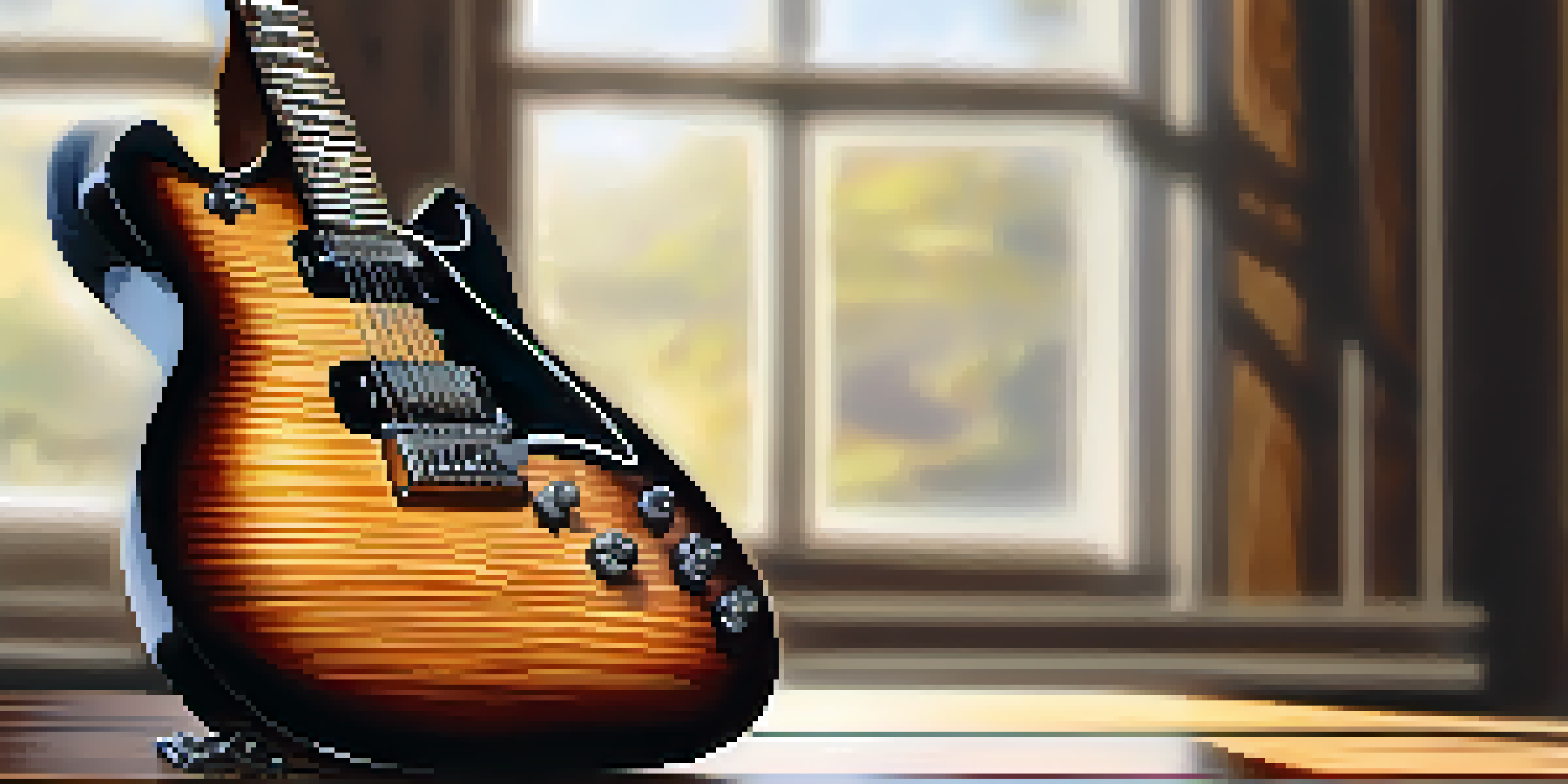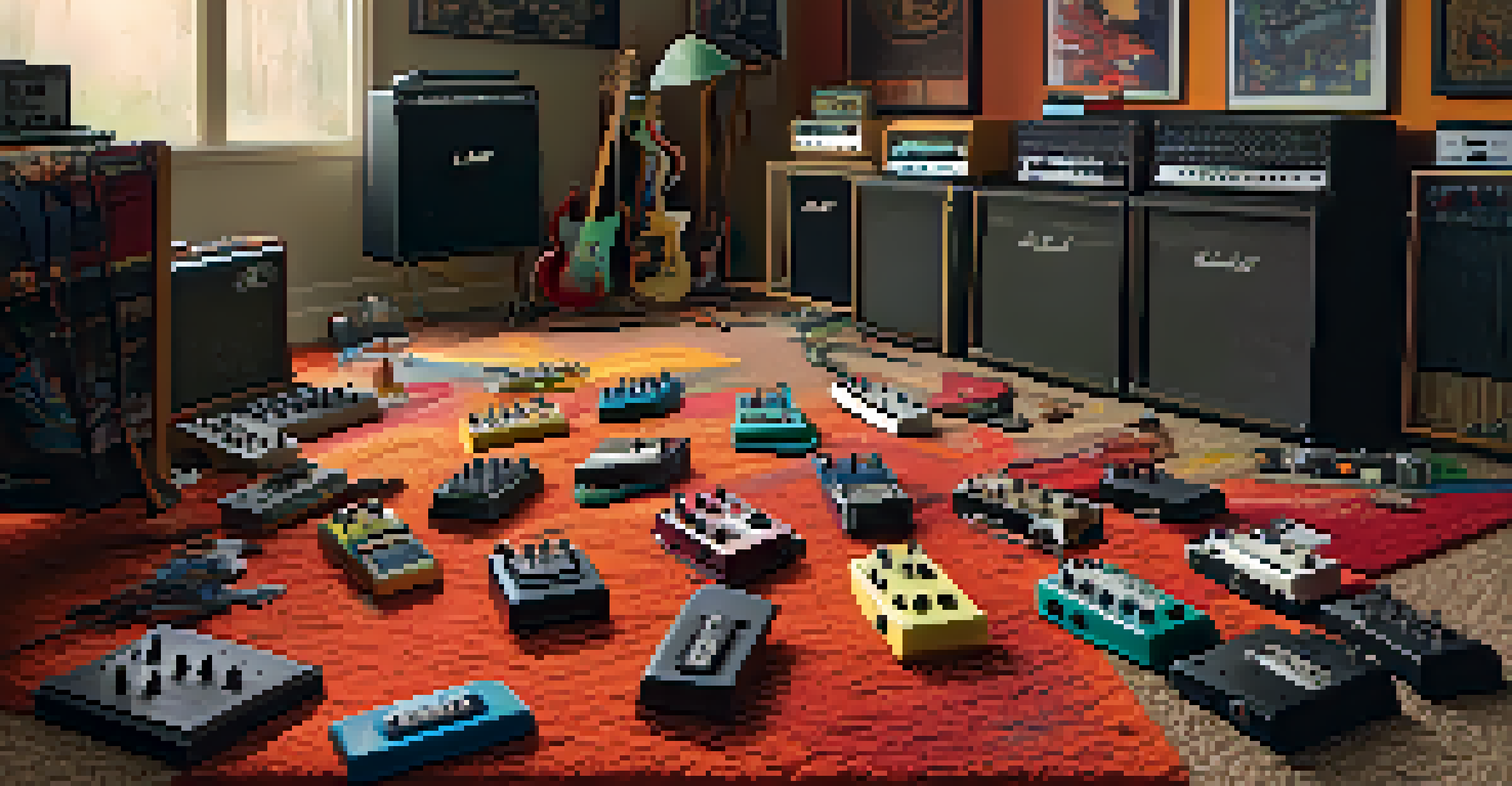The Art of Tone Shaping: Techniques for Every Guitarist

Understanding the Basics of Guitar Tone
Every guitarist knows that tone is everything. But what exactly is guitar tone? It's the character of the sound produced by your instrument, influenced by factors like pickups, wood, and even your playing style.
Tone is the difference between a good guitar and a great one.
Think of tone like the flavor of your favorite dish; it can change dramatically depending on the ingredients. Just as a pinch of salt can elevate a recipe, small adjustments in your gear can drastically alter your sound.
The key is to experiment and listen closely. By understanding the basics of tone, you’ll be better equipped to make informed decisions about your gear and how you use it.
The Role of Effects Pedals in Tone Shaping
Effects pedals are like spices in your musical kitchen—each one brings a unique flavor to your sound. From distortion to delay, these tools allow you to customize your tone to fit any genre.

For example, a simple overdrive pedal can add warmth and grit to your sound, while a reverb pedal can create a sense of space, making your notes linger beautifully.
Guitar Tone Basics Explained
Understanding guitar tone involves recognizing how factors like pickups, wood, and playing style contribute to your instrument's unique sound.
Experimenting with different combinations of pedals can lead to discovering your signature sound. So, don’t be afraid to mix and match until you find the perfect recipe!
The Importance of EQ Settings
Equalization, or EQ, is a powerful tool in shaping your guitar tone. It allows you to boost or cut specific frequencies, helping you carve out your place in a mix.
The guitar is a small orchestra. It is polyphonic. Every guitar is a different color.
Imagine mixing colors on a palette—just as you would adjust the amount of red or blue to achieve the right shade, you can tweak your EQ settings to highlight the qualities of your guitar sound.
Many amps come with built-in EQ controls, so take some time to experiment. Understanding how to manipulate EQ can make a world of difference in your overall tone.
Using Pickups to Shape Your Sound
Pickups are the heart of your guitar’s sound. They convert the vibrations of the strings into an electrical signal, affecting everything from brightness to warmth.
Different types of pickups, such as single-coils and humbuckers, offer distinct tonal characteristics. For instance, single-coils are known for their sharp, clear tone, while humbuckers provide a thicker, more robust sound.
Effects Pedals Enhance Your Sound
Using effects pedals allows you to customize your guitar tone, much like adding spices to a dish to create distinct flavors.
Don’t underestimate the impact of pickup position, either. Moving your pickup selector can dramatically change your tone, giving you a wide range of options to explore.
The Impact of Guitar Wood on Tone
The type of wood used in your guitar can significantly affect its tone. Different woods resonate differently, contributing unique qualities to the sound.
For example, mahogany often delivers a warm, mellow tone, while maple adds brightness and clarity. It's similar to how the choice of wood can change the sound of a piano.
Understanding the tonal characteristics of various woods can help you make informed decisions when purchasing a guitar or making modifications to your existing instrument.
Mastering Your Playing Technique for Better Tone
Believe it or not, your playing technique is just as crucial as your gear when it comes to tone. The way you pick, strum, or fret notes can all influence your sound.
For instance, a light touch may yield a softer tone, while aggressive picking can produce a louder and more dynamic sound. Think of it as the difference between whispering and shouting in a conversation.
EQ Settings Shape Your Tone
Mastering EQ settings can significantly enhance your guitar tone, helping you carve out your sonic space within a mix.
Practicing your technique with intention can help you discover nuances in your tone that you might have overlooked. The more you refine your playing, the more your tone will naturally improve.
The Role of Amp Settings in Tone Shaping
Your amplifier is another key player in the tone-shaping game. Just as a chef adjusts the heat and cooking time, you need to tweak your amp settings to achieve the desired sound.
Focusing on parameters like gain, treble, mid, and bass can help you sculpt your tone. For example, increasing the mids can help your guitar cut through a band mix, while lowering the treble might create a smoother sound.

Take the time to explore your amp's capabilities. Every amp has its personality, and finding the sweet spot can unlock new tonal possibilities.
Putting It All Together: Crafting Your Signature Tone
Now that you have a grasp on various tone-shaping techniques, it’s time to put them all together. Think of crafting your tone as composing a song; every element needs to work harmoniously.
Start by identifying the sounds you love and the elements that appeal to you. Whether it’s a crunchy distortion or a lush reverb, knowing what you want helps guide your choices.
Remember, tone shaping is an ongoing journey. Keep experimenting and refining your sound, and soon, you'll develop a signature tone that truly represents your musical identity.